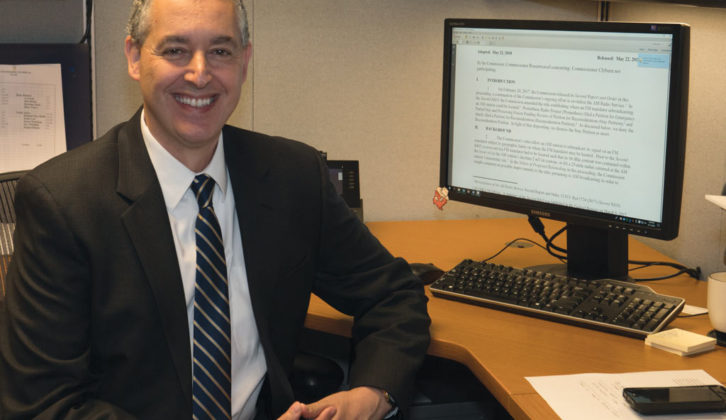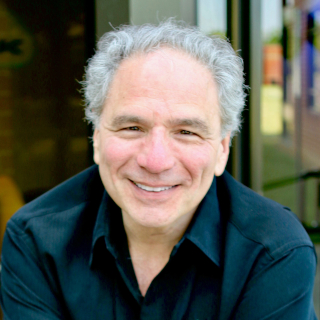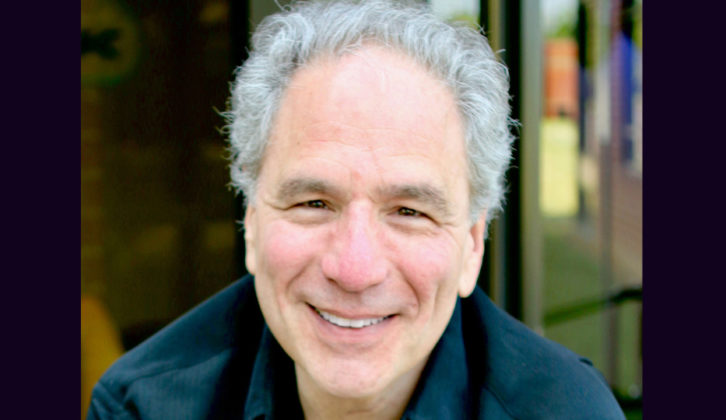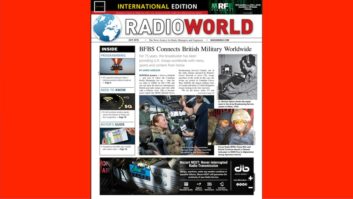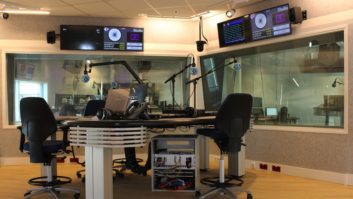HASSELT, Belgium — On Wednesday, April 18, Belgian public broadcaster VRT’s regional channel Radio 2 Limburg aired its morning drive show, “Start je dag” (“Kick off your day”), from the basket of a hot-air balloon soaring at an altitude of 100 to 300 meters (300–900+ feet) over the Limburg province. This marks a technical feat and the first time in the country’s radio history that the entirety of a radio show has been aired from hot-air balloon.
At 6:00 a.m., Radio 2 presenter Daan Masset embarked for his flight, accompanied by the station’s weatherman Eric Goyvaerts. “We could not make use of cable connections and the project required specific solutions. Colleagues from VRT Sandbox and VRT’s innovative department were a great help in helping us pull off this unique radio broadcast,” said Masset.
“The main idea was to produce a two-hour live radio show in an airborne balloon basket,” explained Karel De Bondt, project coordinator of VRT Sandbox, who prepared the project and provided the technical solutions.
“Normally we use our mobile radio studio for outdoor projects, but the three flight-cases didn’t fit in the balloon’s gondola. We also wanted to capture the images of the broadcast for live streaming and Facebook and had a similar space problem with video equipment,” De Bondt said, “And we were working on a shoestring budget.”
De Bondt opted for a brand new solution, developed by his VRT colleague Renaud Schoonbroodt. “Renaud wrote a software package that contains all functionalities needed to produce radio via a tablet or laptop,” he explained. “The result is a virtual radio studio.”
[Read: Joe’s “Tournée Minérale” Takes Broadcast Underwater]
Schoonbroodt’s start-up company, On-Hertz, provided an embryonic version of the LUMO software containing a mixing console, microphone EQs and dynamics, jingle and playlist players and a telephone hybrid system. The software also includes an audio matrix for different output mixes. The presenter used a Sennheiser HMD 27 headset. “The hot air propulsion burner of the balloon produces quite some noise and the HD 25, also used for sports events coverage, was the perfect solution, with hands-free operation for the DJ,” added De Bondt.
For the video, the balloon studio was equipped with four Logitech Brio 4K HD webcams, controlled by a laptop carrying vMix live streaming software. “We see that hardware is becoming increasingly capable and at interesting prices,” said De Bondt. “This puts professional video tools in the hands of radio broadcasters. The idea of producing radio from a hot air balloon was unthinkable years ago, with the logistics of an outside broadcast vehicle and the high cost of staff.”
The balloon’s audio and video signal flow was channeled to VRT’s line center in Brussels by means of a LiveU wireless field audio and HD video transceiver equipped with eight 4G SIM cards. In the VRT line center, the radio signal was transmitted to Radio 2 Limburg’s antenna park — the video content was streamed on the broadcaster’s platforms. A UPS battery powered the equipment.
VRT Sandbox supported Schoonbroodt ’s project to develop the application. “We believe in his product and we are implementing the new software in tests and radio projects. The Radio 2 balloon was the baptism of fire on national radio,” emphasized De Bondt. “We tested the entire transmission chain three times and went right on air. The broadcast ran flawlessly.”
VRT Sandbox Helps Innovate Content
Sandbox was launched three years ago as part of the VRT’s innovation department. Its core business consists of searching for media technology startups and matching them with radio, TV and on-line content productions.
“The product or application is not demoed but directly used in an on-air environment,” said Karel De Bondt, project coordinator. “This is a double win: the startup learns a lot about how his product operates in the field and he gets feedback from the users. And the VRT keeps its finger on the pulse of the latest developments in media technology, while building a network of innovative entrepreneurs around the national broadcaster.”
At press time, VRT Sandbox has carried out projects with some 100 startups.
